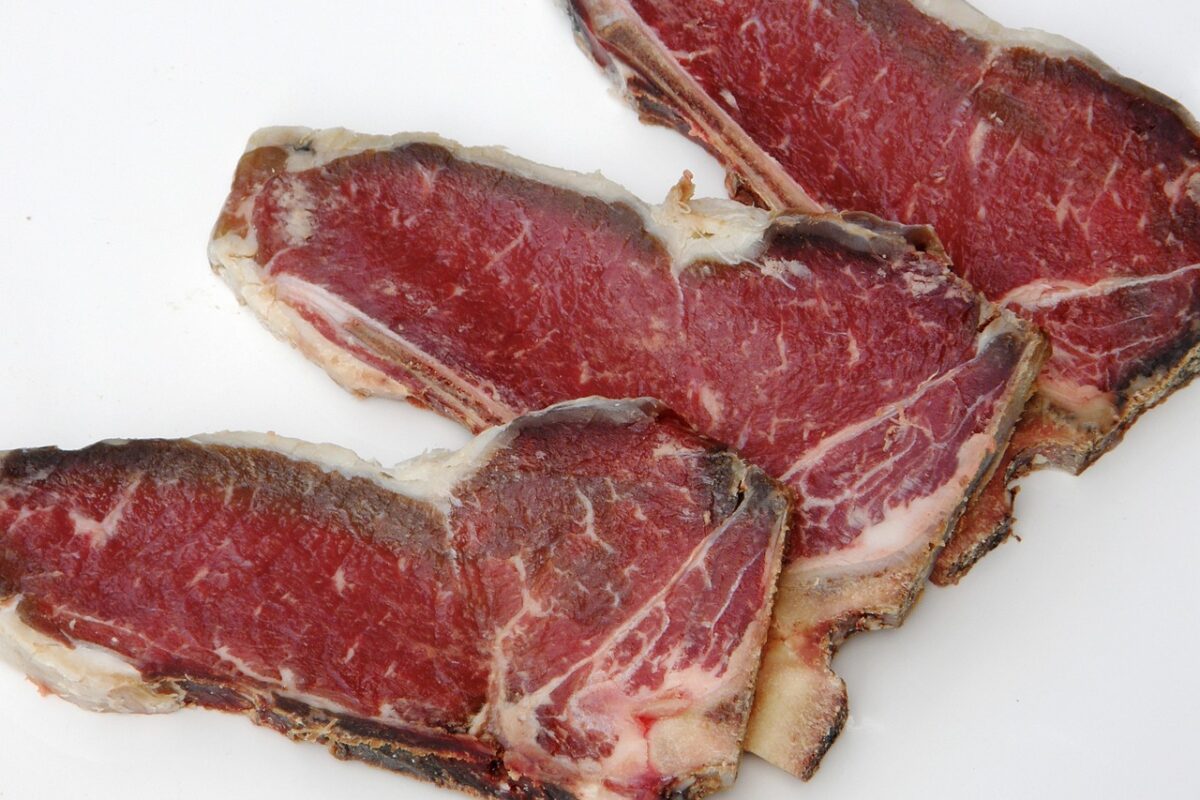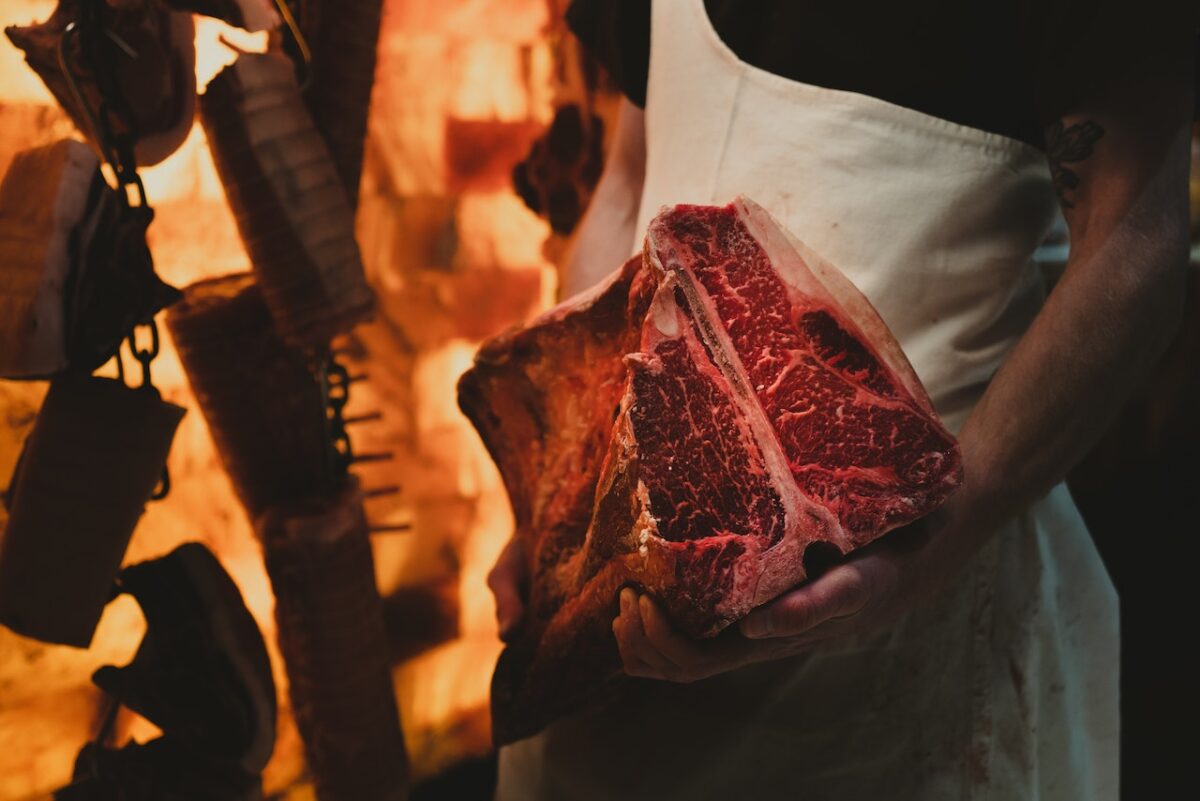As an Amazon Associate we earn from qualifying purchases.
Beef steaks can be prepared in numerous ways. Similarly, sous vide style of cooking can be used in many ways. Can you sous vide dry aged beef? The answer can help create a lot of recipes for home cooks who want to serve the most memorable meals to guests and family.
Quick Navigation
Can You Sous Vide Dry Aged Beef?
Yes, you can sous vide dry aged beef, and the method is quite easy. If you have a large party to feed, cooking this kind of beef in larger portions will become easier by adopting this cooking style. The results with this technique are always similar and it gives you free time to finish other food items as well.

This French style of cooking is going to be an excellent choice for home cooks and chefs who cannot spend time preparing each steak separately, and require all the steaks to be the same. When cooking for more people, the time taken to make this item can be high if cooked on a stove.
Things to Remember When Cooking Dry-Aged Beef With Sous Vide
If you are ready to cook meat with this special technique of preparing meat, you can prepare it easily. Follow the correct time and temperature to get the desired results. This item takes up to four hours to cook and the best temperature for this kind of meat is 130⁰ Fahrenheit.
When you are vacuum sealing the steak with a sealer, ensure that it is cold so that it does not lose its texture during cooking. This is done with chamber sealers, which are not as efficient as machine sealers so that color and texture remain the same.
After cooking is complete, you can remove the meat from the bag and serve. However, some people like to sear the steaks a little to give them a brownish glaze. If you want to sear the steak, chill the bag in cold water and then open it after the steak cools down. Sear it in the pan and serve.
Thickness of Meat and Duration
The mentioned temperature and duration is for 1.5-inch thick steaks. If you are taking a thicker steak, the time for preparation will increase while the temperature will remain the same. Do not alter the temperature as that would overcook the steak.
Why Should I Cook Beef With This Method?
This cooking style is an excellent way to cook food as the heat is evenly distributed. It can be challenging for cooks to make every steak taste the same. When done individually, you may end up heating or searing some steaks more than the others. This inconsistent manual cooking can result in varied taste and texture.
When you use this special vacuum bag cooking in warm water, the results are well-cooked steaks that are as cooked from the outside as they will be from the center. Moreover, the tender and juicy texture is a big attraction.

Dry-Aged Beef Steak Recipe
There are so many easy and interesting recipes for sous vide beef. One of the easiest and most flavorful recipes for this item can help reduce your effort while getting you some amazing compliments. Be sure to follow the steps closely, and you will surprise the guests with some gourmet meals.
Ingredients
- Beef Steaks (dry aged)
- Salt
- Pepper
- Dried Rosemary and Basil
- Olive Oil
Method:
- Set the water in the sous vide cooker to preheat at 130⁰ Fahrenheit.
- Season the steaks with salt, pepper and place one stem of dried rosemary on top.
- Drizzle with a little Olive Oil.
- Allow the beef steaks to rest to an internal temperature of 55⁰ Fahrenheit and then put them in vacuum bags.
- Vacuum seal the bags and as soon as the water oven is set,
- Let the steaks cook for up to four hours,
- Transfer the vacuum bags to chilled water to cool the steaks
- Once done, melt some butter in a skillet, and add dried herbs
- Sear the steaks and serve
Dry Aged Beef Cooked With Other Methods
Cooking meat can be tricky when you are preparing it in a pan or skillet. You have to turn the steaks every minute to ensure that both sides are equally cooked and browned. The best way to ensure that the beef steaks are cooked through to the center is that you cut them thin.
On the contrary, sous vide allows you to cook thick steaks evenly without making the surface harder and the edges stiffer. The time taken using a pan may be less than four hours, however, the results are not as consistent. Some differences between these two styles of preparing this item are:
- Pan-seared beef steak will require high flame heat while this French style of cooking requires low temperatures
- Pan cooking can demand more careful input from the cook such as timing the flip every time to ensure nothing burns

Related Questions
When you try to prepare meat using the sous vide method of cooking, be sure to see what other cooks are asking, and what replies they get. This will help you understand the method more.
What Is the Difference Between Sous Vide Style Beef and Pan-Seared Beef?
The taste of both the beef steaks can be similar, and both are delicious. However, the easier and more consistent style of ensuring good results every time is to use this method. Pan-seared steaks require more time, higher flame and full attention while the former method ensures that the beef cooks by itself.
Will I Have to Cook Meat on a Pan Later?
No, you do not have to cook the steak on a pan after you take it out of the vacuum bag. However, you can sear the beef a little only to give it a glaze and improve its look. When you cook meat in a vacuum bag, it becomes tender and well-cooked.
Conclusion
If you can cook beef steaks in a heavy-duty silicone bag, can you sous vide dry aged beef also? Get to know the ways to cook beef with this cooking style and create gourmet meals for your dinner parties. You will get used to the uniform results.
